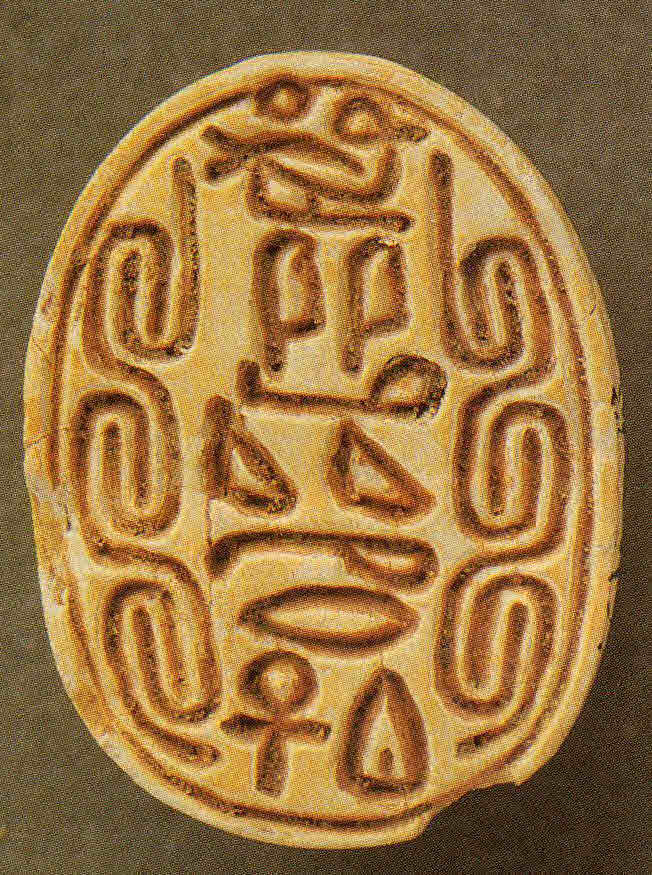
BAR Jul-Aug 1996
For Part 1, Introduction go here
For Part 2, Merneptah and the Book of Judges go here
For Part 3, The Problem of Solomon’s Chronology go here
For Part 4, The 430-year Sojourn go here
For Part 5, The 400 years of slavery go here
Sometime around the 1770s B.C.E., a group of Semite-speaking Canaanites obtained control over a small part of Egyptian territory. Sometime later, around 1680 to 1650 B.C.E. depending upon whether you use the High or Low Egyptian chronology, a larger and more powerful group of Semite-speaking Canaanites seized control over a vast swath of Egyptian territory, and may have even ruled all of Egypt for a period of time.
Egyptologists assign the first group of foreigners to the Fourteenth Dynasty and the second to the Fifteenth Dynasty. It is not known if the Fourteenth Dynasty ended when the Fifteenth Dynasty began or if it ruled concurrently for some portion of the time. It is the Fifteenth Dynasty with which we are concerned.
According to one Egyptian source, the Turin Canon of Kings, the Fifteenth Dynasty lasted 108 years, until Ahmose, the Theban founder of the Eighteenth Dynasty drove them out of the country, but the fighting continued outside of Egypt for another eleven years or so before the final defeat of these foreign rulers.
Egyptologists commonly refer to these two groups as the Hyksos kings but the first person to use that term was Manetho, the third century B.C.E. Egyptian priest who wrote a history of his country. We only know about that name because Josephus, the first-century Jewish historian, in his Contra Apion, quoted Manetho’s references.
According to Josephus, Manetho gave two different definitions of Hyksos, “Shepherd Kings” in one copy of the history and “captive Kings” in another. This latter interpretation led Josephus to identify the Hyksos with the children of Israel.
The term Hyksos derives from the Egyptian phrase “Heqau-khasut,” meaning “Chieftains of a foreign land.” Alan Gardiner translated the term as “Chieftains of a foreign hill-country” and says that in the Middle Kingdom (early third-millennium B.C.E.) Egyptians applied that term to designate Bedouin sheiks (Egypt of the Pharaohs, 156)” Manetho, writing in Greek, transliterated the phrase as Hyksos, and it is highly unlikely that this educated Egyptian priest would not have known the meaning of the Egyptian term. Interestingly, the Egyptian literature referencing the Hyksos era, both contemporaneous to the Hyksos rule and in writings about the aftermath, never used that term for the invaders. The Egyptians referred to them as Aamu, which was probably the name they were known by in Canaan.
Josephus equated the expulsion of the Hyksos with the Exodus of Israel from Egypt. This claim influenced scholars until well into the twentieth century, and the Hyksos were commonly known throughout this entire era as the “Shepherd kings.” But Josephus’s definitions of the Hyksos were wrong. Whether it was his error or that of an intervening redactor who passed on Manetho’s history we can’t say.
In Part 5 of this series, discussing the 400-year prophecy to Abraham, it was noted that period would end when the iniquity of the Amorites ended. What this “iniquity of the Amorites” meant is not known. While the meaning of the term “Amorite” in the Genesis prophesy is debatable, in the biblical account of the Exodus, we are told that “the Amorites live in the hill country (Numbers 13:29).” This description is consistent with, though not necessarily proof of, a connection between the Aamu/Hyksos and the Amorites.
Fueling the idea that there is a connection between the Israelites and the Hyksos comes from an archaeological find. Scarabs from this era show many of the Hyksos chieftains with Semitic names, two of whom were Jacob-Her and Anat-Her. (See the illustration at the beginning of the article.) Linguists do not know what the “her” element stands for, but Anat is a well-known Canaanite goddess.
A number of scholars have been quick to see the name Jacob on the other scarab, speculating about its connection to the biblical Jacob. That the names are similar is true, but by analogy to the Anat-her inscription, Jacob could have been the name of a Canaanite god. At most, it only proves that the name Jacob existed in ancient times. No evidence connects this Jacob-her in any way to the biblical Jacob.
If the expulsion of the Hyksos constituted the Exodus, then it can be dated to somewhere between 1576 and 1550, depending upon whether we use the High or Low Chronology. This would make King Ahmose the Pharaoh of the Exodus. That makes his predecessor, Kamose, the Pharaoh who died just before Moses returned to Egypt. I suppose one could equate the long war between the Hyksos and the Thebans as a metaphor for the plagues sent by God.
Dating the Exodus to the expulsion of the Hyksos closely tracks the claim in the book of Judges that the Exodus happened about 300 years before the time of Jephthah. The Merneptah stele places Israel in Canaan in the last third of the 13th century B.C.E. The Hyksos expulsion occurred in the middle of the sixteenth century B.C.E., a period about 325 to 350 years before the Merneptah stele. Given a couple of uncertain factors such as how long Samuel judged Israel, how long Saul ruled, and how long after the Exodus the 300 years start, there could be some slight wiggle room to make this work.
Also, the Hyksos era starts in the 1770s B.C.E. and the expulsion occurred about 200-250 years later. This is somewhat consistent with the interpretation that says that Jacob and his family were in Egypt for 215 years before the Exodus. The Hyksos theory, therefore, seems to have some chronological parallels with biblical evidence. But there are also some problems.
First, we’d have to jettison the claim that the Exodus occurred 480 years before the fourth year of Solomon’s reign. If we date that year to the historical evidence, the king’s fourth year was in 967 or so. That would date the Exodus to 1447, about a century after the Hyksos expulsion. If we count from the earlier date based on biblical data for the reigns of the kings, Solomon’s fourth year would be 1017. That indicates a date of 1497, still a half-century after the Hyksos expulsion.
We are also missing the 400 years of affliction since the Hyksos were rulers during all their time in Egypt. The only affliction is their expulsion and the continuing war for another eleven years. It should also be noted that the Hyksos, while in Egypt, worshipped the Egyptian god Set, whom they identified with the Canaanite god Baal, not the Hebrew god.
If we use the traditional Jewish date of Creation and count down to the birth of Joseph, he was born in 1564 and didn’t die until 1454. Since the bible says that the slavery didn’t begin until after Joseph died, there would be more than a century after the Hyksos expulsion before an Exodus could occur. Once again, we need to move Joseph to a substantially earlier time to make the numbers work, pushing Creation much earlier than the Jewish date.
Today, not many scholars equate the Hyksos expulsion with the Exodus. Instead, an alternative theory has been proposed. Acknowledging that the Hyksos were not the Israelites, the argument goes that the Israelites drew on traditions about the Hyksos expulsion to frame their own Exodus narrative. This theory does not necessarily say that there was or wasn’t an Exodus. It only says, whether there was or not, the basis of the biblical account derives from traditions about the Hyksos expulsion.
Coming up next: Manetho’s theory of the Exodus
